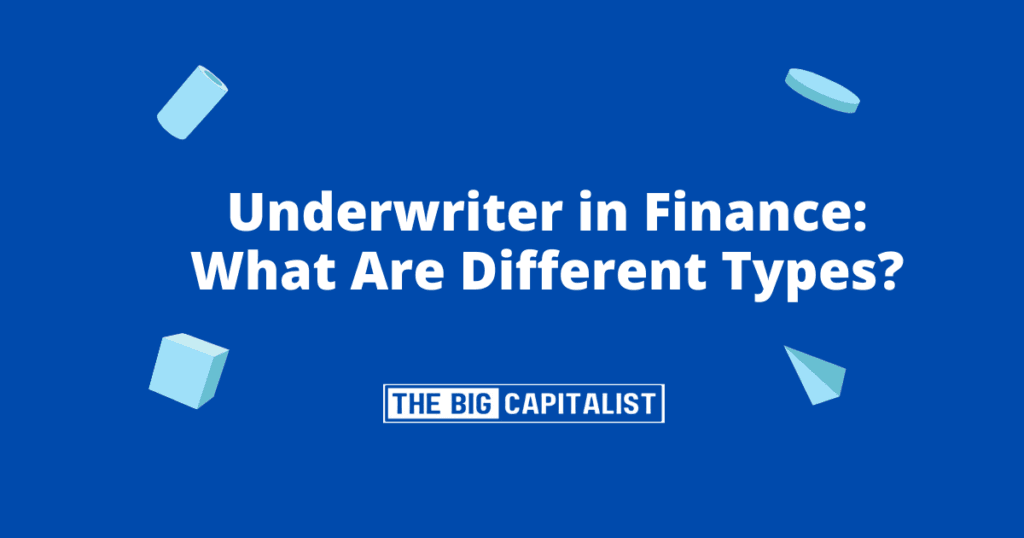In the world of finance, underwriters play a pivotal role. They are the gatekeepers, assessing risks and making critical decisions.
But what exactly does an underwriter in finance do?
They evaluate the risk of lending money or issuing insurance policies. They scrutinize applications, analyze data, and determine whether to approve or reject a proposal.
Underwriters also set the terms and conditions of financial agreements. They decide on the interest rates for loans or the premiums for insurance policies.
This article will delve into the intricacies of the underwriting process. We’ll explore the different types of underwriters, the guidelines they follow, and the importance of risk assessment.
Join us as we unravel the complex yet fascinating world of underwriting in finance.
The Role of an Underwriter in Finance
Underwriters are essential to the financial industry. They evaluate risk and ensure financial transactions are sound and secure.
Their work involves meticulous analysis of applicants’ profiles. They look into financial history, credit scores, and other significant details.
Underwriters must make informed decisions. They decide whether to approve loans, insurance policies, or investment offerings. These decisions have a lasting impact on financial institutions’ stability.
In the realm of insurance, they determine premiums by assessing the likelihood of claims. They aim to balance risk with profitability, safeguarding the insurer’s interests.
For financial markets, they play a key role in determining the viability of stocks and bonds. By managing risk effectively, underwriters bolster confidence in the financial ecosystem.
Overall, an underwriter in finance is tasked with maintaining equilibrium. They safeguard both the interests of financial entities and the end consumers, ensuring that all parties benefit.
The Underwriting Process and Risk Assessment
The underwriting process is comprehensive and multi-step. It begins with collecting relevant data from applicants. This data includes income, employment history, and credit records.
Underwriters use this information to conduct a thorough risk assessment. They analyze the potential risks associated with lending money or insuring individuals. This helps them decide whether to proceed or decline the application.
During the risk assessment phase, underwriters carefully consider various factors. These include:
- Creditworthiness of the applicant
- Historical data on similar applicants
- Current market conditions
- Regulatory requirements
The underwriting process also involves adhering to specific underwriting guidelines. These guidelines serve as a framework, ensuring consistency and accuracy in assessments.
Ultimately, the process balances the need for profitability with the necessity of risk management. Underwriters assess if the potential rewards outweigh the risks. If the risk is manageable, they set terms and conditions that mitigate financial exposure.
Skills and Qualifications of an Underwriter
Underwriters require a unique blend of skills and qualifications to excel in their roles. A keen eye for detail is essential, as they must thoroughly assess every piece of information provided by applicants.
Analytical skills are also crucial. Underwriters need to interpret complex data and draw meaningful insights. These insights help in evaluating risk and making sound decisions.
Communication skills play a vital role. Underwriters must articulate their findings and decisions clearly to stakeholders. This can include financial professionals, clients, and managers.
A strong educational background in finance, economics, or a related field is often necessary. Many underwriters hold degrees that provide a solid foundation in risk assessment and finance principles.
Certification can enhance an underwriter’s expertise and credibility. Professional certifications, like the Chartered Property Casualty Underwriter (CPCU), demonstrate a higher level of competence. Continuous education is vital to stay updated with industry changes and evolving regulatory requirements.
Types of Underwriters in Finance
Underwriters in finance specialize in diverse sectors. Each type plays a pivotal role in assessing and managing risks. Understanding these differences is crucial to appreciate their contributions to the financial world.
The main categories include insurance, loan, and securities underwriters. Each category requires distinct skills tailored to their respective industries. These underwriters ensure that financial transactions are carried out with minimized risks.
Insurance Underwriters
Insurance underwriters evaluate applications for insurance coverage. They analyze potential policyholders’ risk factors. Their assessments determine the terms and premiums for insurance policies.
This role demands a deep understanding of various insurance products. Examples include life, health, property, and casualty insurance. Each product has unique risk factors and underwriting guidelines.
Insurance underwriters use actuarial data in their evaluations. This data helps to predict the likelihood of claims. By balancing potential risks and profitability, they contribute to the insurer’s financial health.
Effective communication is crucial for insurance underwriters. They often work closely with agents and brokers. This collaboration ensures accuracy in policy details and customer satisfaction.
Lastly, technology impacts insurance underwriting significantly. Underwriters utilize software tools for risk assessment. These tools streamline their decision-making processes and improve precision.
Loan Underwriters
Loan underwriters are integral in the lending process. They assess the creditworthiness of individuals and businesses seeking loans. Their evaluations are crucial in mitigating the lender’s risk of default.
This type of underwriting involves analyzing financial documents. Loan underwriters review credit reports, income statements, and tax returns. This analysis helps them determine an applicant’s ability to repay the loan.
Underwriting guidelines are pivotal in this process. They ensure consistency and fairness in the evaluation of loan applications. These guidelines help underwriters assess risk in line with the lender’s standards.
The role requires strong analytical skills and attention to detail. Loan underwriters need to identify potential red flags in applications. Their decisions have a significant impact on the lending institution’s portfolio.
Technology and automation also influence loan underwriting. Automated underwriting systems speed up the evaluation process. They improve accuracy by reducing human errors and biases.

Securities Underwriters
Securities underwriters facilitate the issuance of securities. They help companies bring stocks and bonds to market. These underwriters play a vital role in the financial markets.
Their responsibility includes evaluating the risks associated with new securities. Securities underwriters conduct due diligence. They assess the company’s financial health and market potential.
The process involves setting the initial price for the securities. Accurate pricing ensures a successful launch. It balances the interests of the issuing company and potential investors.
Collaboration is key in securities underwriting. Underwriters work with investment banks and corporate clients. Their joint efforts help orchestrate smooth public offerings.
Finally, technology shapes securities underwriting. Data analytics tools provide insights into market trends and investor behavior. These tools support sound decision-making throughout the underwriting process.
Underwriting Guidelines and Regulatory Compliance
Underwriting guidelines play a crucial role in risk assessment. They provide a framework for evaluating potential risks. These guidelines ensure consistency in decision-making across the underwriting process.
Regulatory compliance is vital in underwriting. Regulations help protect both the financial institution and the consumer. They establish standards that must be adhered to in the underwriting process.
Guidelines are designed based on historical data and risk models. They take into account past trends and potential future risks. This data-driven approach helps underwriters make informed decisions.
Compliance with regulations often involves complex requirements. Underwriters must stay updated with changing laws and rules. This ensures that their practices align with legal and ethical standards.
Finally, maintaining compliance is not just about following rules. It also involves actively managing risks and ethical considerations. Underwriters must balance these responsibilities while achieving business objectives.
The Impact of Technology on Underwriting
Technology has revolutionized the underwriting profession. Automation streamlines the underwriting process, reducing time and cost. Many tasks that required hours of manual work now take minutes.
Advanced analytics also enhance risk assessment capabilities. Underwriters can now leverage big data and machine learning tools. These technologies provide deeper insights into risk factors and market trends.
Finally, technology improves accuracy and minimizes errors. Digital tools ensure that decisions are based on comprehensive and reliable data. As a result, underwriters can offer more precise and customer-friendly solutions.
Ethical and Social Responsibilities of Underwriters
Underwriters have critical ethical obligations in their roles. They must adhere to transparency and fairness when assessing risks. This ensures trust between financial institutions and their clients.
Social responsibility is also a growing concern. Underwriters should consider the broader impact of their decisions. By promoting socially responsible underwriting, they can contribute to positive societal change.
Furthermore, ethical underwriters ensure compliance with legal standards. They must stay informed about relevant regulations and policies. This vigilance helps prevent financial crimes and protects stakeholders.
Challenges and Future Trends in Underwriting
Underwriters face significant challenges in today’s dynamic market. Emerging risks, such as cyber threats, require constant adaptation. Keeping up with these changes is essential for success.
Economic fluctuations impact underwriting strategies and profitability. During downturns, risk assessment becomes even more crucial. Underwriters must balance risk with the need for profitability.
Regulatory changes also pose challenges. Compliance with evolving legislation can be complex and demanding. This requires underwriters to stay vigilant and adaptable.
Technological advancements present both opportunities and hurdles. Automated processes improve efficiency but require careful implementation. Underwriters must learn to integrate technology while maintaining control.
The future of underwriting will likely involve more data-driven decisions. Big data and machine learning can enhance risk assessments. Underwriters must embrace these innovations to remain competitive.
Conclusion
Underwriters are essential to the financial world, balancing risk and opportunity. Whether in insurance, loans, or securities, they ensure smart, secure financial decisions. As technology and regulations evolve, so too must their skills and tools. Underwriting remains a critical pillar of financial stability.
FAQs: Understanding Underwriters
Q1: What does an underwriter do?
An underwriter assesses risk and decides whether to approve loans, insurance, or investments, setting terms like interest rates or premiums.
Q2: What are the main types of underwriters?
The three key types are insurance underwriters, loan underwriters, and securities underwriters, each serving a different area of finance.
Q3: How is technology changing underwriting?
Technology streamlines processes, improves accuracy, and enhances risk analysis through automation and data-driven tools.
















